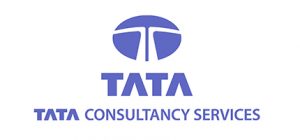This module will help the candidate with the knowledge of Payroll Management. Learn about HR planning, Employee transfer, and the Increment process. Know about the Income under the Head Salaries u/s 17(1) of Income Tax Act 1961. Gain a comprehensive understanding of Reimbursement management, attendance management, and Salary components.
Income Under The Head Salaries u/s 17(1) of Income Tax Act, 1961
- Meaning of Salary, Wages, Annuity and Retirement benefits
- Allowances and type of Allowances
- Valuation of Perquisites and Taxability of Perquisites
- Retirement benefits
- Salary Components in terms of Fixed and Variable:
- Setup Payroll Administration and Functions
- Structure of cost to the company – CTC Annexure
- Bonus Payment and Treatment of Bonus
- Fee and Commission and Overtime Payment
- Taxable and Non-Taxable Payments (Exempted)
Allowances
- Fully taxable allowances
- Partially taxable allowances upto bills produced
- Partially taxable allowances upto limits
- Fully tax exempted allowances
Perquisites
- House to stay
- Car by employer under different conditions
- Driver by employer
- Medical Insurance
- Superannuation
- Furnishings
- NPS
Labour Law Statutory Compliances & Computation
This module will equip the candidate with knowledge of the Labour law Statutory Compliances. Become aware of Employee Provident fund, Employee state insurance, Labour welfare fund, and more.
Employee Provident Fund – PF
- What is a covered establishment?
- PF Wages, Contribution accounts & Rates
- PF Deposit Date
Employee State Insurance – ESI
- What is a covered establishment?
- Existing Wage Limit, ESI contribution rates, Contribution Periods
Professional Tax – PTAX (PT)
- Professional tax applicability
- Professional tax slab state-wise
- Professional tax calculator
- Professional tax payment & registration
Labor Welfare Fund – LWF
- Labor welfare fund applicability
- Labor welfare fund rate(slabs) state-wise
- Where to deposit Labour Welfare Fund
Professional Tax – PTAX (PT)
- PT applicability
- PT slabs statewise
- PT exemptions and calculation
Statutory bonus and Gratuity
- Labor welfare fund applicability
- Labor welfare fund rate(slabs) state-wise
Tax calculation, Tax Saving Investment Deductions and Exemptions
This module offers knowledge about the Tax Saving investment to the candidate. Know the deduction under the Income Tax Act , Investment proofs examination under section 80C, and more. Gain knowledge about the LTA, HRA, Leave Encashment, and Deduction of Interest on Housing Loan u/s 24(b) of Income Tax Act, 1961
Tax Deduction at Source – TDS
- What is Income-tax?
- Income tax slabs and Income tax Computation
Deduction (u/s 80C – u/s 80U) of Chapter VI-A of Income Tax Act, 1961
- Deductions under section 80C.
- Deductions under section 80D, 80E, 80U.
- Deductions under section 80DD, 80DDB, 80CD2
- Deductions under section 80G, 80GG, 80GGA,
- Deductions under
- Validation or Examination of Investment Proofs and Reimbursement Claims
- Investment Proofs examination Under section 80C
- Investment proofs examination others
- Expense Bill examination of Reimbursements
- Limit of Deductions and max eligibility up to Pro Rata, Previous Employer Income.
- LTA, HRA, Leave Encashment, and Gratuity Exemption Calculations
Leave Travel Exemption - House Rent allowance – HRA Exemption
- Leave Encashment Exemption
- Gratuity Exemption, Exemptions others.
- Deduction of Interest on Housing Loan u/s 24(b) of Income Tax Act, 1961
Meaning of House Property - Essential conditions for taxing income under this head
- Interest on borrowed capital, Standard deductions
- Deductions from income from house Property [Sec.24]
- Calculation format, and Examples
Calculating tax payable from employee salary after all exemptions and deductions
Payroll Processing and Reports
This module will guide you through Payroll Processing methods. Learn to gather payroll inputs and set up employee information on Razorpay and excel sheet. Apply Compliances rule & Tax Rates and Determine Calculation & Deductions. Know about step-by-step verification and payroll checking.
Claim and Reimbursement Management
- Claim Management Module.
- Expense bills Submission.
- Medical Reimbursement, and Travel Reimbursement.
- Type of Reimbursements.
- Disbursement of Claim Reimbursement.
Attendance Management System and Resignation (Full and Final) of Exits
- Time Management System.
- Leave Management System.
- Type of leaves, and Leave without Pay Calculation.
- Full and Final Settlement Input and Calculation.
Gather Payroll Inputs, Setup Employees Information in Payroll System -Razorpay
- The Features of Payroll Processing.
- Employee Profile setup.
- Update Payroll Changes.
Verification and Payroll Checking Step by Step
- Prepaying variance reports of Monthly Payroll Payout.
- Transformation of Payroll inputs.
- Attribution of head-count and cost payout.
- Income Tax deduction and Variance of Income Tax deduction – TDS.
- To give maximum benefit to Employee on investment declaration.
- Ensure Calculation of variance Compliances, PF, ESI, P.TAX, LWF, etc.
Salary Register, Slips, Bank Transfer and Management Information System – MIS
- Overview on salary Slip and Salary Register.
- Management Information Reports – MIS, Variance of Payroll and Cost Center Reports.
- Bank Transfer to the Employee, Cost to Company Reports.




























